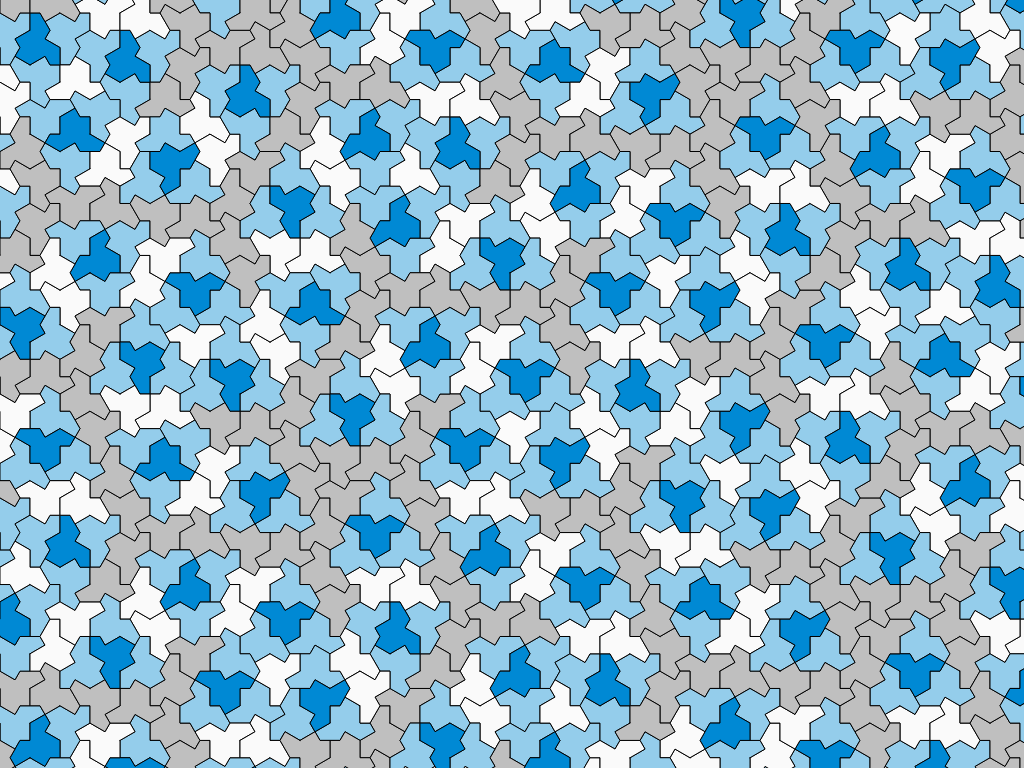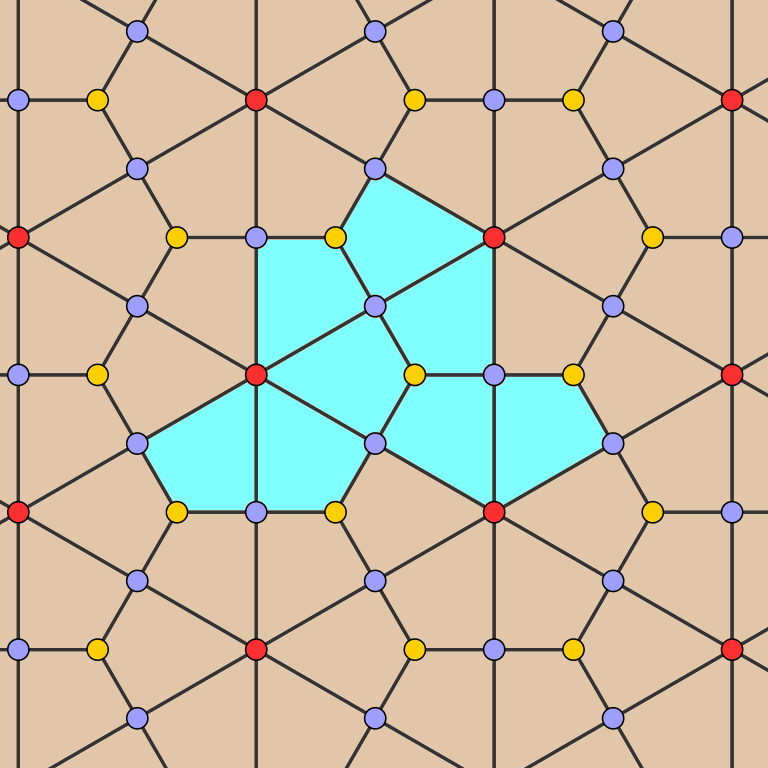David Smith, Joseph Myers, Craig Kaplan, and Chaim Goodman-Strauss have discovered an aperiodic monotile: a polygon that tiles the plane by rotations and reflections, but cannot tile the plane periodically.

Any tiling induced by the monotile is scalemic: the majority of tiles are unreflected, with only a relatively small proportion (shown in dark blue) being reflected. The ratio of unreflected to reflected tiles is φ^4 : 1, as can be determined from taking the authors’ description of the tiling in terms of a substitution system of ‘metatiles’:
- H → 3H + 3P + 3F + T
- P → 2H + P + 2F
- F → 2H + P + 3F
- T → H
and then taking the dominant eigenvector (corresponding to the dominant eigenvalue φ^4) to find the proportions of metatiles in the limit tiling, and using that to deduce the fraction of unreflected monotiles.
The tile itself is remarkably simple: it is a 13-sided polygon formed from the union of eight of the kites in the deltoidal trihexagonal tiling, which is itself the common refinement of the regular hexagonal tiling and its dual:

Adapted from an illustration by Tilman Piesk
This paper came a few days after the solution of another long-standing open problem in combinatorics, namely an improvement to the exponent in the upper bound on the Ramsey number R(s, s).
Additionally, a few months ago Barnabas Janzer proved that there exists a pair of convex compact sets each homeomorphic to a closed 4-ball such that a copy of S exists inside K in every orientation, but such that (remarkably!) the space of ways to embed copies of S inside K is not path-connected. This resolves a question posed by Hallard Croft.

Pingback: An aperiodic monotile exists! | The Aperiodical
The paper doesn’t discuss this that I can see, but clearly the most important feature of this discovery is that having only one type of tile eliminates the extremely high risk of spoonerising the two Penrose tiles into ‘karts and dites’. 🙂
Less frivolously (but not by all that much), this tiling is now available to play a puzzle game on:
https://www.chiark.greenend.org.uk/~sgtatham/puzzles/js/loopy.html#10x10t16dh
Pingback: An Aperiodic Monotile | Combinatorics and more
Pingback: A New Tiling | Gödel's Lost Letter and P=NP
Pingback: Seekers of the One-Stone |
Pingback: Miscellaneous discoveries | Complex Projective 4-Space